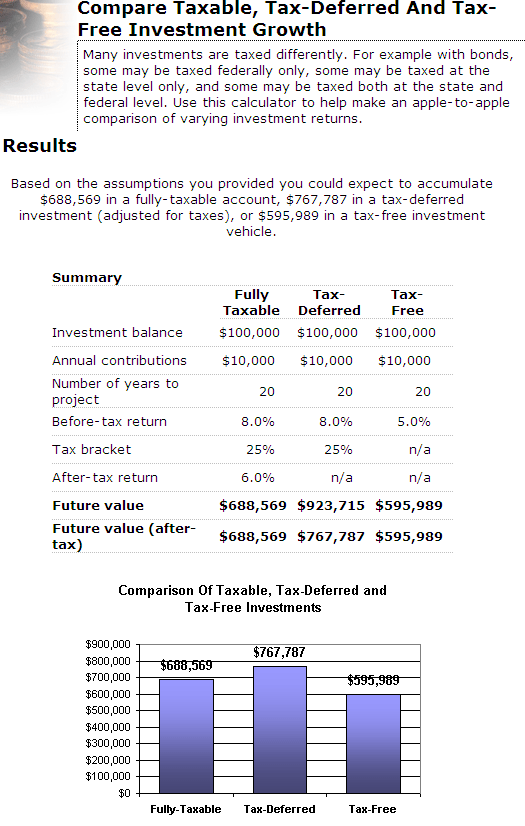How Much Better Is Your 401k Than A Regular Taxable Brokerage Account
Post on: 28 Август, 2015 No Comment

Everybody loves 401k plans for their tax advantages. But exactly how good are they, really? What if your 401k only offers limited, more expensive options than you can find from a regular brokerage account? I wanted to explore this using some estimated numbers, just to see how it works out. I know my assumptions wont fit everyone, but people can adjust them to be closer to their own situation.
- Start with a $10,000 pre-tax contribution for each
- Both plans have the same imaginary investments for 30 years
- Annual return on those investments is 8%, broken down into 6% from capital gains, and 2% in qualified dividends. This is to approximate the amount of dividends currently being paid on stocks in general.
- 28% ordinary tax bracket both now and upon withdrawal in retirement
- 15% tax bracket for long-term capital gains and qualified dividends
- Any company matching is ignored, as everyone should contribute up to the match.
401k Calculations
The calculations for the final value of the 401(k) are relatively simple. You start with $10,000, it grows at 8% annually without any tax consequences for 30 years, and then upon withdrawal it is taxed at ordinary income tax rates. With our assumptions, the math would look like this:
$10,000 x 1.08 30 x (1-0.28) = $72,451
Taxable Account Calculations
For a taxable account, things are a bit more complex as you have to pay taxes on any realized gains as well as dividends received. My assumptions are for the simplified example of a passive index fund that had no turnover and no realized gains, and so the only taxable event each year would be the dividends paid out.
Since we have to pay taxes on the $10,000 pre-tax amount, we actually only start with $7,200. After the first year, it grows 6% ($432) and also gives off 2% ($144) in dividends. On the dividends, we pay taxes of $21.60 (15% of $144), and reinvest what we have left into the account again. So after the first year we would have $7,200 + $432 + ($144 $21.60) = $7,754.40. We also have to keep track of unrealized gains, which right now amount to $432.
If we repeat this over 30 years, we end up finally with an account value of $66,651, with unrealized gains of $50,324. If we sell now, we would pay long-term capital gains tax of 15% on those now-realized gains. So we are left with:
401k Earns You 23% More Money?
So using these specific assumptions. putting that $10,000 of pre-tax money in a 401(k) would earn you $13,349 more than if you bought the same investment in a taxable account. Thats 22.6% more money!
Changing the returns amount and holding period will alter this number, but the 401k will still win out by a similarly healthy margin assuming the investments within are identical.
A More Expensive 401k Can Wipe Out Any Benefits
But not so fast often our 401k choices arent as good as what we could find in the open market. In addition to possible load charges, one easily measured example is expense ratios, which directly lower returns. Here, it works out that if the investment in the 401k is more expensive by only 0.7%, virtually all the benefit of the 401k is wiped out. Put another way, this would mean a net return of only 7.3% annually.
$10,000 x 1.073 30 x (1-0.28) = $59,611
For example, you can find a passive S&P 500 ETF or mutual fund on the open market with an expense ratio of 0.20% or less (IVV, VFINX, FSMKX). But Ive seen 401ks with an S&P 500 index fund with an expense ratio of 0.90%, which would create such a 0.70% gap.
- The 401k can be a great way to boost your returns, especially if you are lucky to have good investment options.
- Expenses matter, even a relatively small annual difference can have a big impact over the long term.














